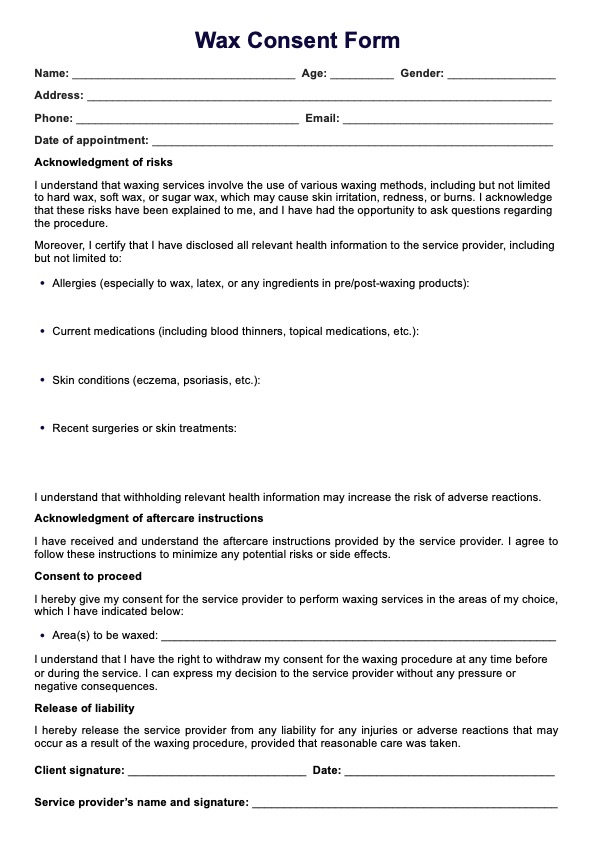The waxing release form documents the client's informed consent, outlining some details like the procedure, risks, and aftercare instructions, and serves as a legal record.

Wax Consent Form
Try out our Wax Consent Form template, designed for healthcare professionals and aestheticians and ensuring informed consent and legal protection.
Use Template
Wax Consent Form Template
Commonly asked questions
Waxing consent forms typically include client information, a description of the procedure, risks and side effects, disclosure of health information, aftercare instructions, and client consent.
The most important question concerns any allergies or skin conditions that could affect the waxing procedure or cause adverse reactions.
EHR and practice management software
Get started for free
*No credit card required
Free
$0/usd
Unlimited clients
Telehealth
1GB of storage
Client portal text
Automated billing and online payments











